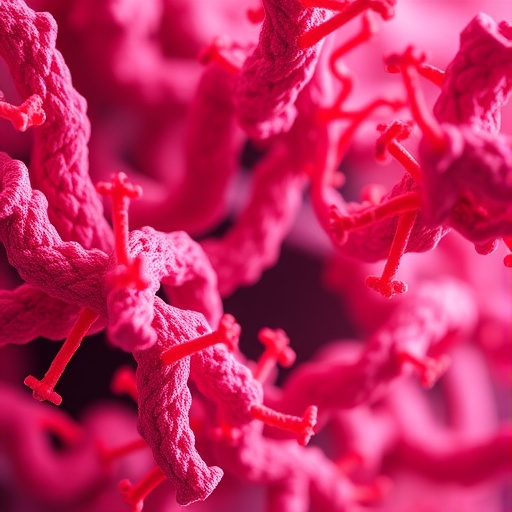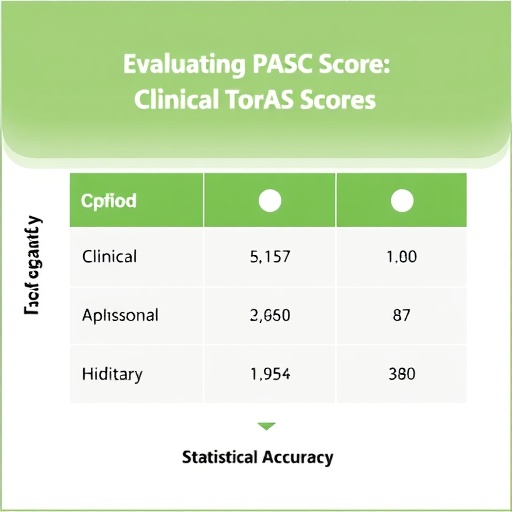In a groundbreaking study published recently, researchers have unveiled a promising new therapeutic strategy to combat hepatocellular carcinoma (HCC), one of the deadliest forms of liver cancer worldwide. This study, spearheaded by Yu and colleagues, sheds light on a novel synergistic drug combination that could revolutionize current treatment paradigms. At the heart of this breakthrough is the protein ChaC1, whose role in cellular homeostasis and cancer biology has recently attracted significant scientific interest. Utilizing sophisticated ChaC1-based drug screening methodologies, the team identified an unexpected but lethal synergy between the well-established drug auranofin and proteasome inhibitors, opening new avenues for precision oncology interventions.
Hepatocellular carcinoma remains a formidable clinical challenge, largely due to its late diagnosis and resistance to conventional therapies. Existing treatments, including surgical resection, locoregional therapies, and systemic agents, often fall short in delivering long-term survival benefits for many patients. The study’s focus on ChaC1, a known regulator of intracellular stress responses, capitalizes on the growing understanding that cancer cells rely heavily on proteostasis mechanisms to survive hostile tumor microenvironments. By targeting these delicate cellular processes, the research team aimed to disrupt the cancer’s adaptive capabilities, thereby inducing cell death selectively in malignant hepatocytes.
The researchers employed an innovative ChaC1-based screening platform, designed to identify compounds that modify the activity of this critical proteostasis effector. ChaC1 is implicated in regulating glutathione metabolism and redox balance, processes intricately linked to cellular oxidative stress management. Intriguingly, alterations in these pathways have been strongly associated with cancer cell survival and drug resistance. By leveraging this biochemical node as a screening target, the team succeeded in uncovering compounds that exerted augmented cytotoxic effects in HCC models.
Auranofin, a gold-containing compound with a long history of use in rheumatoid arthritis, emerged from the screens as a potent modulator of ChaC1 activity. Importantly, auranofin’s inhibition of thioredoxin reductase disrupts cellular antioxidant defenses, heightening oxidative stress—a vulnerability exploited by combining it with proteasome inhibitors. Proteasome inhibition is a therapeutic approach that hinders the degradation of misfolded or damaged proteins, leading to proteotoxic stress that cancer cells are particularly sensitive to. The synergistic effect of these two agents triggers an overwhelming accumulation of toxic protein aggregates and reactive oxygen species, compelling cancer cells towards apoptosis.
In vitro experiments conducted across various hepatocellular carcinoma cell lines demonstrated a dramatic reduction in cell viability when treated with the combined regimen of auranofin and proteasome inhibitors, compared to either agent alone. This finding underscores the therapeutic potential of capitalizing on dual vulnerabilities in the cellular protein quality control machinery. The study further delved into mechanistic analyses revealing that ChaC1 modulation aggravates oxidative and proteotoxic stress, effectively pushing tumor cells beyond their survival threshold.
Another intriguing aspect of the research pertains to the selective toxicity profile of the drug combination. While cancer cells exhibited pronounced susceptibility to the dual treatment, non-malignant hepatocytes were largely spared, suggesting a possible therapeutic window that could minimize collateral damage in normal tissue. This selectivity is paramount in cancer treatment development, where minimizing adverse effects remains a critical hurdle in clinical application.
The clinical implications of this discovery could be profound. Given that both auranofin and proteasome inhibitors such as bortezomib and carfilzomib are already FDA-approved agents, repurposing these drugs for HCC treatment could significantly shorten the timeline from bench to bedside. The use of clinically validated compounds also facilitates the design of combination therapy trials, as known pharmacokinetics and safety profiles can expedite regulatory approvals and patient enrollment.
Moreover, the identification of ChaC1 as a predictive biomarker for therapeutic responsiveness opens the door to more personalized medicine approaches in oncology. Patients with elevated ChaC1 expression or activity in their tumors might be stratified to receive this combinatorial treatment, enhancing efficacy and sparing non-responders from unnecessary toxicity. Future studies aimed at validating these biomarkers in clinical cohorts will be indispensable for translating the preclinical findings into routine clinical practice.
The research also raises exciting possibilities for investigating similar synergistic drug combinations in other cancers where proteostasis disruption is a hallmark, broadening the impact beyond hepatocellular carcinoma. Such cross-cancer applicability would underscore the universal importance of cellular stress response pathways in malignancy and cancer therapy.
From a molecular biology perspective, this study deepens our understanding of how redox regulation and protein degradation pathways converge to control cancer cell survival. It provides compelling evidence that targeting these interconnected cellular stress responses can deliver powerful anti-tumor effects. This aligns with emerging trends in oncology that emphasize combinational strategies over single-agent treatments for overcoming resistance and enhancing therapeutic durability.
In summary, Yu et al.’s work represents a significant advancement in the fight against hepatocellular carcinoma. By ingeniously leveraging ChaC1’s role in cellular stress response, they have uncovered a synergistic lethal interaction between auranofin and proteasome inhibitors. This discovery not only points to an innovative treatment strategy but also exemplifies the power of targeted, mechanism-based drug screening in oncology drug development. As follow-up in vivo studies and clinical trials advance, the oncology community awaits with anticipation the potential of these findings to improve outcomes for patients afflicted with this devastating disease.
This study’s multidisciplinary methodology, integrating molecular screening, pharmacology, and functional cell biology, serves as a paradigm for future drug discovery endeavors. The promising results encourage further exploration of proteostasis and oxidative stress networks as fertile ground for next-generation cancer therapies. With continuous advancements in biomarker-guided treatment and drug combination strategies, the dawn of more effective, less toxic cancer therapeutics appears within reach.
Given the urgent need to develop better therapies for hepatocellular carcinoma, the identification of this novel drug synergy brings hope to patients and clinicians alike. It also exemplifies the remarkable potential of repurposing existing drugs in innovative ways, a cost-effective and efficient path toward addressing unmet clinical needs. As our molecular toolkit and understanding of cancer complexities evolve, studies like this pave the pathway to transformative breakthroughs that could redefine clinical oncology in the near future.
Subject of Research: Hepatocellular carcinoma treatment and ChaC1-mediated cellular stress pathways.
Article Title: ChaC1-based drug screenings identify a synergistic lethal effect of auranofin and proteasome inhibitors in hepatocellular carcinoma cells.
Article References:
Yu, C., Liu, J., Jian, H. et al. ChaC1-based drug screenings identify a synergistic lethal effect of auranofin and proteasome inhibitors in hepatocellular carcinoma cells. Cell Death Discov. 11, 532 (2025). https://doi.org/10.1038/s41420-025-02838-6
Image Credits: AI Generated
DOI: 17 November 2025





